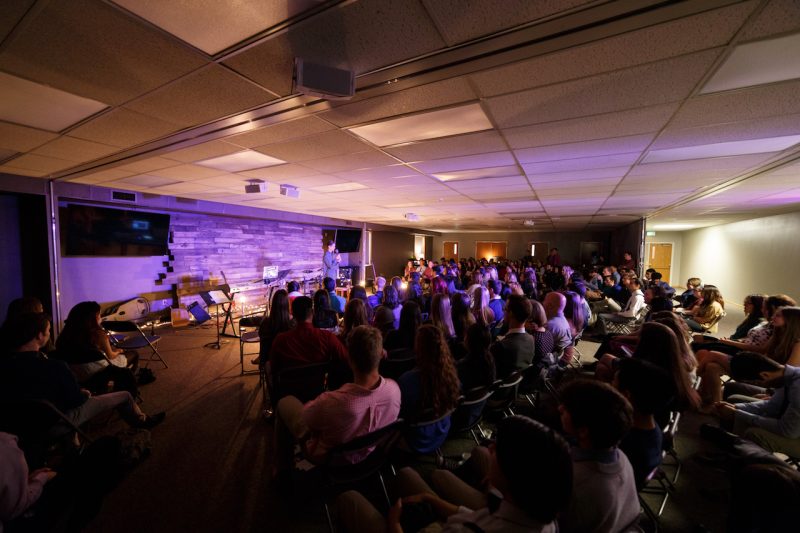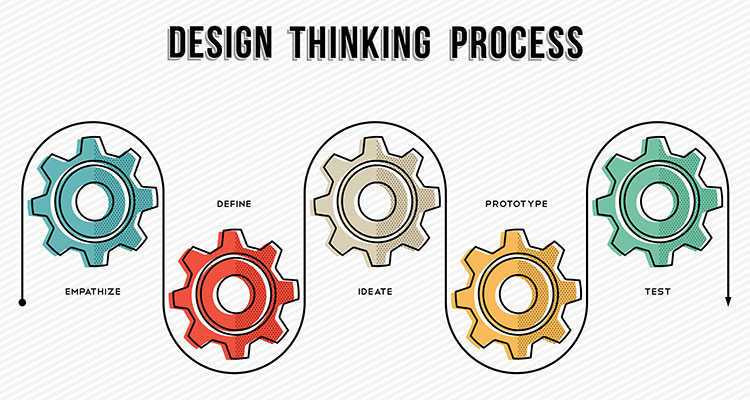How DSLRs Changed Church Production
 One of the best things about the exponential advancement in technology is the steady march towards placing high-quality tools in the hands of more users. One of the worst things about the exponential advancement in technology is the steady march towards placing high-quality tools in the hands of more users.
One of the best things about the exponential advancement in technology is the steady march towards placing high-quality tools in the hands of more users. One of the worst things about the exponential advancement in technology is the steady march towards placing high-quality tools in the hands of more users.
I have two decades of experience with video and film production and have shot on a huge variety of cameras. Something shifted, however, when Canon and Nikon introduced DSLRs like the Canon 5D and Nikon D7000. They changed the photography industry, but they also signaled a change for the house of worship Market.
The Good
There’s a lot of good that has come from making great technology usable and affordable for “the rest of us.” Trust me, I’m going somewhere with how this affects manufacturers and systems integrators, but I need to properly provide back-story to tie it all together.
Without a doubt, the ability to use photography lenses and capture HD video creates beautiful images. Back in 2009, I had my first shoot with a Canon 5D Mark II and was blown away at the depth of field, how I could control the frame rate, and the ability to capture great footage in a wide gamut of lighting conditions.
Best of all, I was spending sub-$10,000 for a camera and several great lenses. Dollar-per-pixel, this was a new era in video and I was taking full advantage of creating video that looked like I’d shot them on 16mm film. It. Was. Beautiful.
In certain applications, such as interviews, capturing event highlights and producing weekly video announcements, it was a dream come true. Our leadership loved the new look and was quick to show the new production quality to their friends in leadership. We had raised the bar to a whole new level and everyone was happy. For now.
The Bad
The new DSLR technology had created an entirely new set of opportunities, visually speaking, but I was getting mired in the downsides of using it. This is why disruptive technology needs to be understood: It’s probably great in many ways but the limitations need to be considered before wholesale change is recommended.
When I began shooting video with the 5D, the realization of the form-factor of a camera body was problematic, even with a tripod or slider. The output was fantastic, but working with a photographer’s camera left a lot to be desired. I compensated by spending considerable money on supporting technology like a Red Rock Micro rails kit, an external HDMI reference monitor, Anton Bauer battery rail-mounted kits and a weight counterbalance system for handheld shooting situations. It all helped, but there were still significant limitations, not the least of which was the very short recording time allowed on the CF cards.
Here’s where the next set of problems cropped up: Once you raise the bar for one area, the expectation is that the bar will be raised for all applications. In the case of video, it’s assumed this marvel of technology would be used for everything video related, including live video, television and Internet streaming. And so the honeymoon began to end.
Similarly, the A/V/L industry is constantly innovating or inventing technologies that create whole new levels of creativity and quality. The marketing hype associated with these advancements is typically “over-promise-under-deliver” (hey, I am marketer, too, so I can speak honestly about this) and the end-user can get caught up in making some decisions that have implications far beyond their initial concepts for integrating the technology.
The Ugly Potential
Of course, Canon and Nikon knew what they were doing: They introduced these features because certain markets could benefit from the short recording times and use of existing lens inventory. What happened, though, was end-users tried using the technology to replace other tools, only to realize the limitations made it impossible to make wholesale change.
As an industry that sells to the house of worship market, the lessons here are important: Offer scalable solutions (or at least a scalable model line) to reach the most users. In many churches, the decision-maker will not have the technical background to make fully informed decisions based off of professional experience. This is why an “under-promise, over-deliver” approach is so helpful to this market: They’ll have greater success in the short- and long-term and are more likely to become loyal customers to your brand.
Clearly, manufacturers will continue to build technology that will be a huge benefit in certain applications and terribly ineffective in others. The responsibility, however, is not unceremoniously dumped on the rep firms and systems integrators to figure out. Responsible product positioning will only reinforce a quality a brand name. Still, integration firms and consultants will need to think through the ramifications of new technologies, especially disruptive ones.
Educating the house of worship market is an important part of the holistic marketing message needed for this space.
Disruptive vs. Disproportional
Change is inevitable and, indeed, desired in the long run. It’s the short-term change that’s the most painful. Churches, like every other organization, are led by people, and people don’t really like change, even if they want it.
Manufacturers, listen: This market wants you to continue to innovate and invent. But what they need most of all is thought leadership to help them see how your technology fits into their context in a proportional way. Disruptive technology is great, as long as it doesn’t create a disproportionate amount of pain or lacks a way to integrate with existing technologies and workflows.
In many ways, I believe this is the bigger challenge: not inventing disruptive technology, but creating clarity and thought leadership around the context of each market. So, it’s time for the engineers and marketing folks to get with end-users and understand each vertical market. With churches, this is easier than most since the disparity between church technology usage is less than in other verticals.
Will your next technology roll-out for the house of worship market be as successful as it could be without this extra effort?
A former staff member at three mega churches and church technology consultant, Anthony Coppedge has developed a respected reputation as a leader in technical and communications circles within the church marketplace. Reach him at anthony@anthonycoppedge.com or on Twitter at http://www.twitter.com/anthonycoppedge





